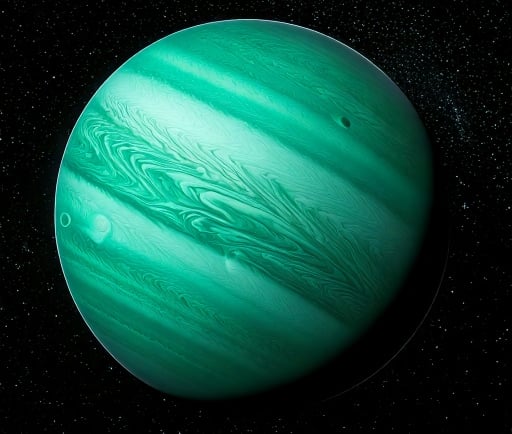HN Librae b: Orbiting the M4.0 V star


Introduction to HN Librae b
In the realm of astronomical discoveries, the recently identified exoplanet HN Librae b has captured the attention of scientists and enthusiasts alike. Discovered in 2023, this Neptune-like planet orbits an M-type star and stands out due to its intriguing characteristics, including a mass exceeding that of Earth.
The Unique Characteristics of HN Librae b
HN Librae b possesses a mass of approximately 5.46 times that of Earth, placing it firmly within the classification of gas giants. This significant mass suggests that HN Librae b may have a thick atmosphere similar to that of Neptune. Additionally, it takes around 36.1 days to complete a single orbit around its host star, showcasing a relatively fast orbital period. The planet is located at a distance of 0.1417 astronomical units (AU) from its star, which is considerably closer than many known planets in our own solar system.
The Importance of Discovering Exoplanets
Investigating exoplanets like HN Librae b is crucial for several reasons. Firstly, it expands our understanding of planet formation and the variety of planetary systems that exist beyond our own. Each newly discovered exoplanet provides valuable data that can inform our models of planetary atmospheres and compositions. Moreover, studies of Neptune-like planets can offer insights into potential habitability conditions and the potential for discovering life on other worlds. The proximity of HN Librae b to its host star and its mass suggest that it could be a prime candidate for further research, particularly in the search for atmospheric characteristics that differ from those of our known planets.
Future Research Directions
As astronomers continue to explore HN Librae b, future research will likely focus on obtaining spectra from the planet’s atmosphere. This could reveal the presence of various gases, paving the way for understanding its climatic processes. Additionally, comparisons between HN Librae b and similar exoplanets can enhance our knowledge about planetary evolution in diverse stellar environments. The study of HN Librae b is poised to contribute significantly to the field of exoplanetary science, offering new perspectives on the complexities of worlds beyond our own.
Conclusion
In summary, HN Librae b represents a cutting-edge discovery in the field of exoplanets. Its fascinating characteristics, including its mass and proximity to its host star, warrant ongoing investigation and hold the potential for significant scientific advancements. As researchers focus on this Neptune-like planet, the insights gained could redefine our understanding of planets and their formation across the universe.
